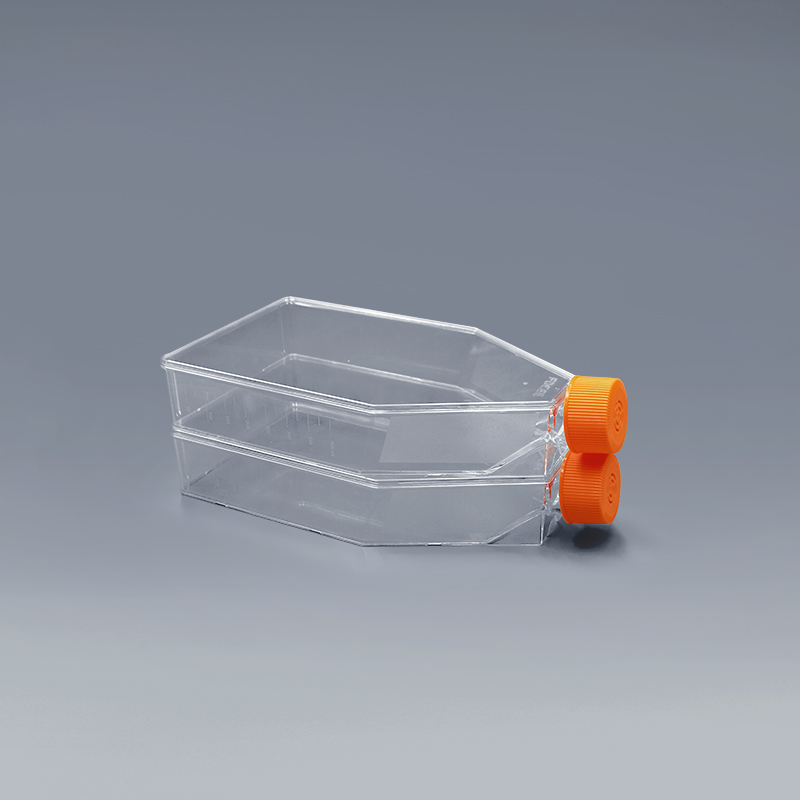Cell culture flasks are commonly used consumables in small-scale cell culture. In order to facilitate the observation of cell growth conditions, polystyrene materials with higher transparency are generally selected for this consumable. So, what are the characteristics of this material?
Polystyrene refers to a polymer synthesized from styrene monomer through radical addition polymerization. It is a colorless and transparent thermoplastic with the following characteristics:
1. Mechanical properties
Polystyrene molecules and their aggregated structure determine that they are rigid and brittle materials, which exhibit brittle fracture under stress.
2. Thermal performance
The embrittlement temperature is about -30°C, the glass transition temperature is 80-105°C, the melting temperature is 140-180°C, and the decomposition temperature is above 300°C. The thermal conductivity is low, ranging from 0.04 to 0.15W/(m·K), and it is hardly changed by temperature, so it has good thermal insulation.
3. Electrical performance
Polystyrene has good electrical properties, with volume resistivity and surface resistivity as high as 1016~1018Ω·cm and 1015~1018Ω, respectively. The dielectric loss tangent value is extremely low, and it is not affected by frequency, environmental temperature, and humidity changes. It is an excellent insulating material.
4. Optical performance
Polystyrene has excellent optical properties, with a light transmittance of 88% to 92% and a refractive index of 1.59 to 1.60. It can transmit visible light of all wavelengths. The transparent material is second only to acrylic polymers such as plexiglass in plastics. .
5. Chemical properties
Polystyrene is resistant to various alkalis, salts and aqueous solutions. It is resistant to lower alcohols and certain acids (such as sulfuric acid, phosphoric acid, boric acid, hydrochloric acid with a mass fraction of 10% to 30%, and acetic acid with a mass fraction of 1% to 25%. , Formic acid with a mass fraction of 1% to 90%) is also stable.
The above properties of polystyrene can meet the needs of cell culture flasks. In addition, if it is used for adherent cell culture, the surface of the bottle needs to be specially modified to increase the adherence performance of the cells.
The FAI climbed 5.9 percent year-on-year in the first 11 months of 2018, quickening from the 5.7-percent growth in Jan-Oct, the National Bureau of Statistics (NBS) said Friday in an online statement.
The key indicator of investment, dubbed a major growth driver, hit the bottom in August and has since started to rebound steadily.
In the face of emerging economic challenges home and abroad, China has stepped up efforts to stabilize investment, in particular rolling out measures to motivate private investors and channel funds into infrastructure.
Friday's data showed private investment, accounting for more than 60 percent of the total FAI, expanded by a brisk 8.7 percent.
NBS spokesperson Mao Shengyong said funds into weak economic links registered rapid increases as investment in environmental protection and agriculture jumped 42 percent and 12.5 percent respectively, much faster than the average.
In breakdown, investment in high-tech and equipment manufacturing remained vigorous with 16.1-percent and 11.6-percent increases respectively in the first 11 months. Infrastructure investment gained 3.7 percent, staying flat. Investment in property development rose 9.7 percent, also unchanged.
 English
English



















































